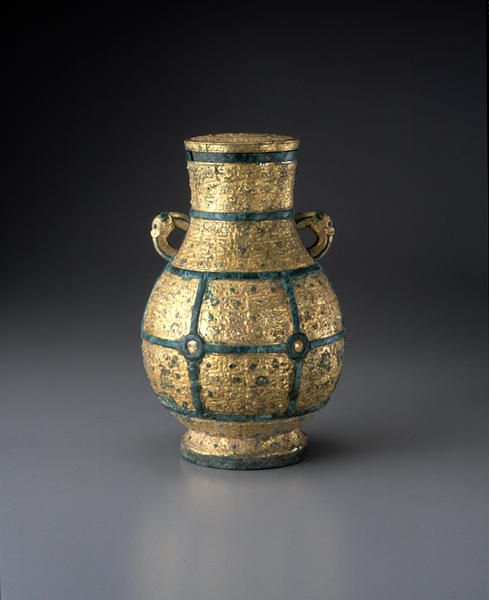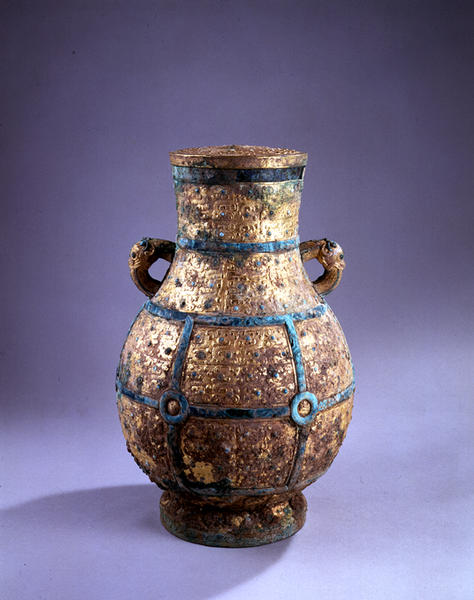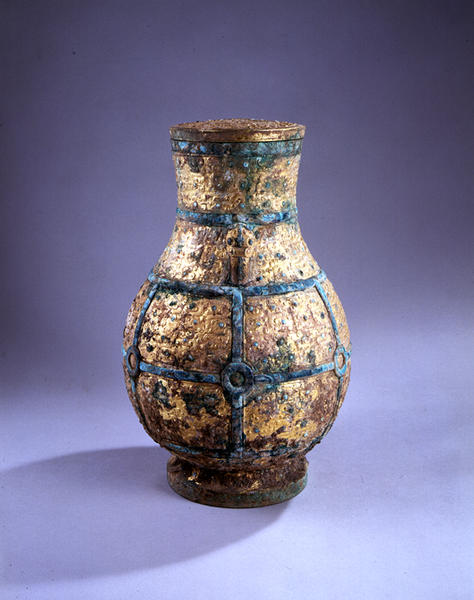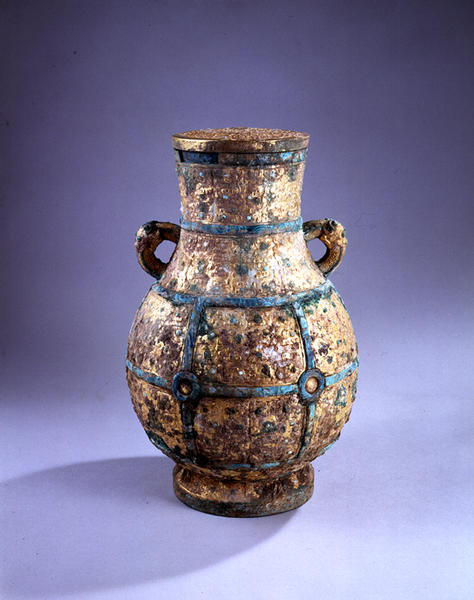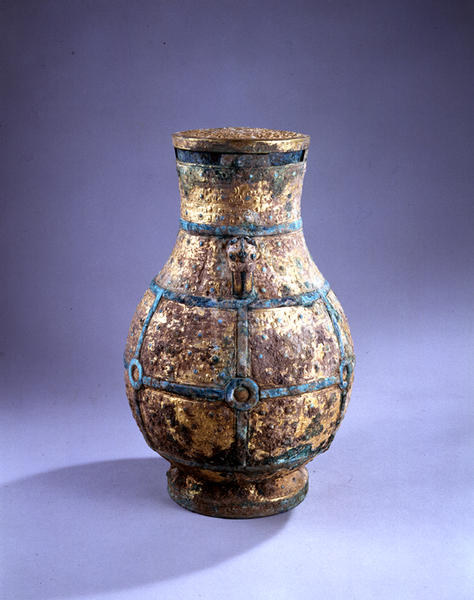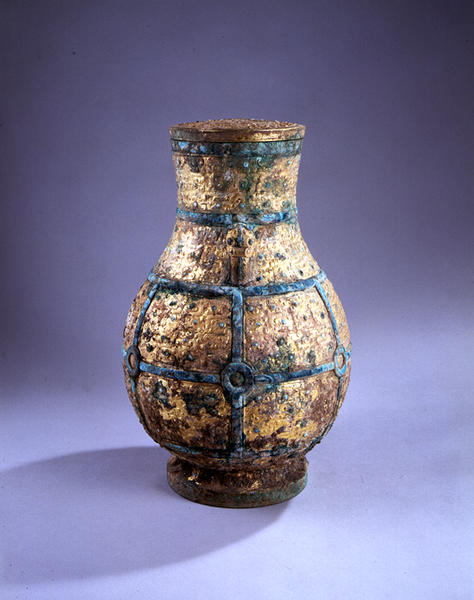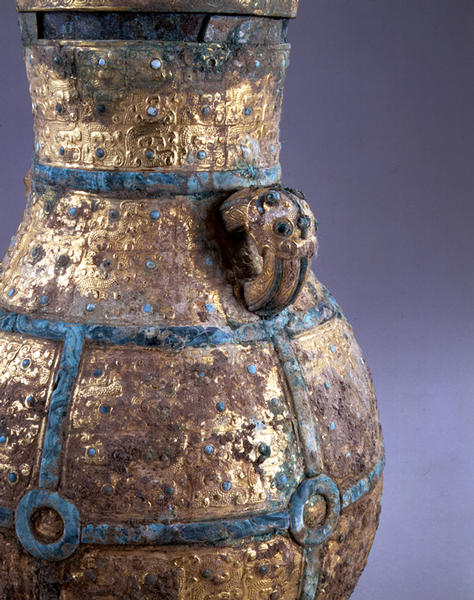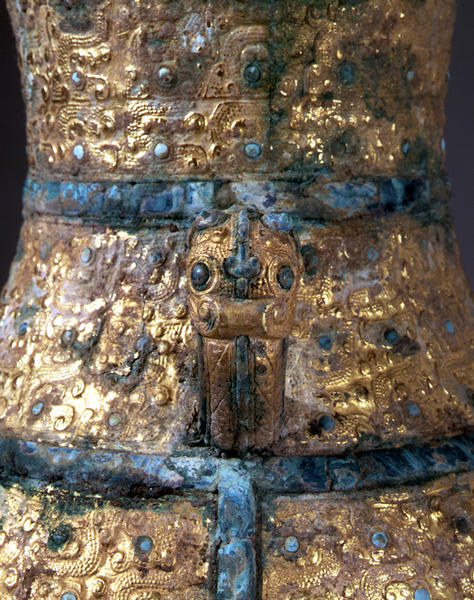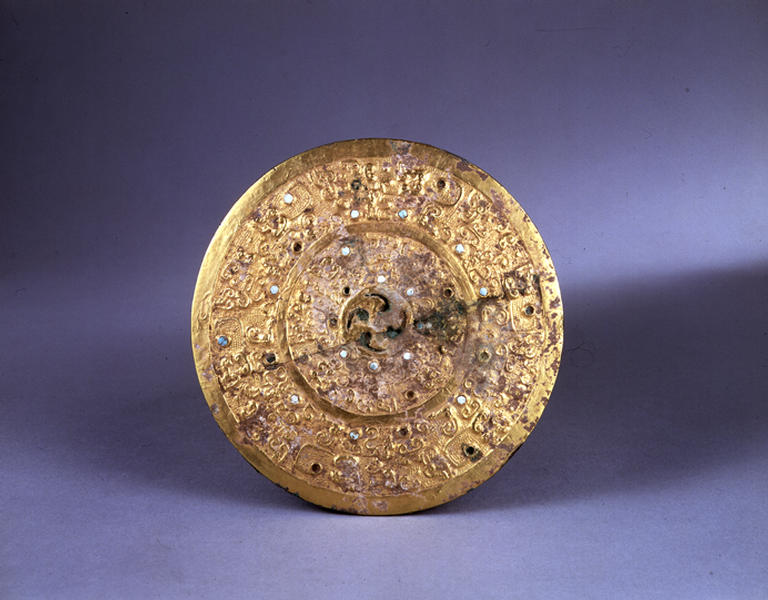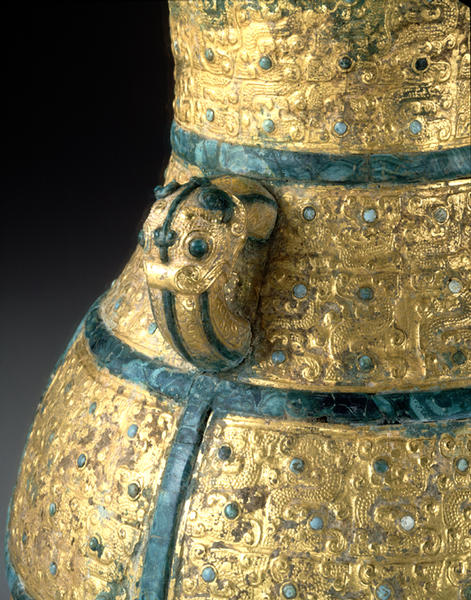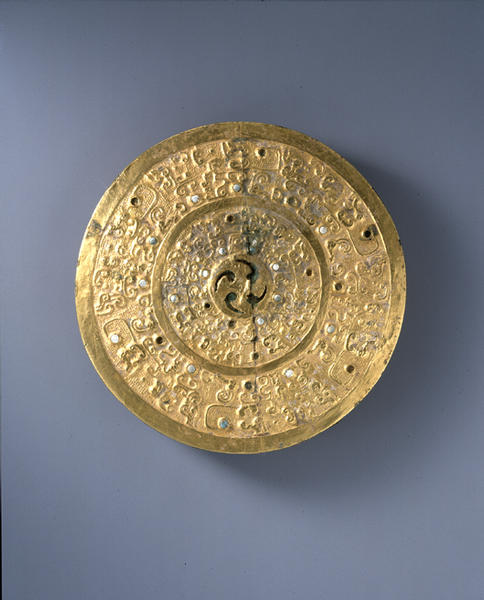Vessel Hu
- China
- China, Late Eastern Zhou period
- 6-5cB.C.
- Bronze, gold, malachite
- H-31.4
Catalogue Entry
This bronze vessel with ring handles on both sides is wide in the middle of the body, and its mouth is slightly flared at the upper part. The wide body is inlaid with carved malachite in a tied rope pattern along its curves. There are malachite bands around the mouth and above the ring handles, as well. The vessel is divided into five horizontal sections by the bands. The dragon pattern on the vessel was made by covering the body with gold sheet and tracing the pattern. The dragon motif is basically S-shaped with a profile at each end of the body. In the uppermost section of the vessel, as divided by the horizontal malachite bands, in the part just below it, in which the handles are fixed, and in the lowest part, the dragons' eyes are inlaid with malachite. In the two middle parts of the body with the design of the tied rope pattern, the dragons' mouths are inlaid with malachite, as if the dragons were holding jade in their mouths.
An animal head with a coiled horn and rolled up snout is fixed on each of the ring handles. The horns, the eyes, and the center line of the head are inlaid with malachite. The vessel is covered with a flat bronze lid, plated with gold, which has a whirl design at the center and abbreviated dragon patterns traced by pressing. Several malachite tips are inlaid on the lid.
The round shape of this vessel appears in the late Spring and Autumn period or early Warring States period, and the tied rope pattern was often used on bronze vessels from the early to middle parts of the Warring States period. Examples with patterns similar to the animal heads on the ring handles, and the dragon pattern of the body and lid can be found in ceramic molds excavated at Houma in Shanxi province.*1
The ornamentation technique of covering bronze or other materials with gold leaf has been known since ancient times, but very few examples remain. In the Mengdiexuan collection, there is a belt-hook made using the technique of gold being cast in a mold over a bronze core, with the gold surface being chased to express the design more clearly. In the P. Uldry collection, there is an ornament with a ring covered with gold sheet, on which the design has been expressed in repousse.*2 In these examples, the surface design is similar to that of the Houma example, but there are no other vessels of this size which have decorations in the same technique.
